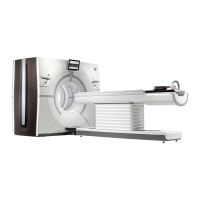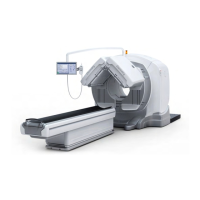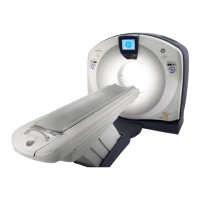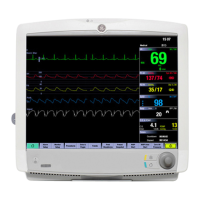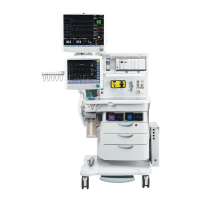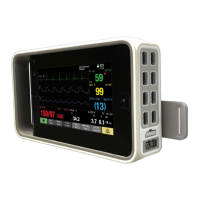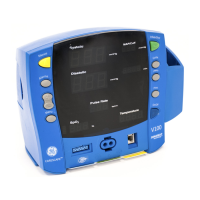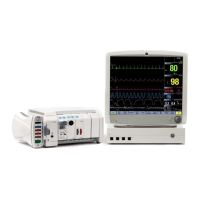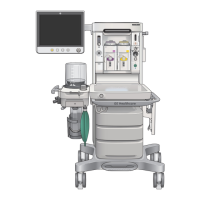GE MEDICAL SYSTEMS CT 9800 QUICK SYSTEM
Rev. 12 Direction 18000
6-9-12
5. Remove and develop the film. Mark a “T” on the film to identify the table side as in Illustration 6-9-10. Verify
that the narrow exposure lies within the wider X-Ray exposure.
Examine the edges of the two exposures in the Z direction. Both edges of each beam should be equally well
defined with the edges of the narrow beam much sharper than the wide beam. If there is a difference in edge
definition, check for gross Z misalignment where the slit in the tube collimator adapter is defining the fuzzy
edge. Both edges of the beam should be defined only by the exit slit of the collimator.
6. Measure the 10 mm exposure to determine the plane of rotation. Use a Pocket Comparator with reticle or
Vernier caliper to measure the two widths of the wide beam not covered by the narrow beam. If these
dimensions are XF(front) and XR(rear), then the difference in centers of the two beams is [XF -XR]/2.
To meet the “cold” tube conditions and maintain the perpendicularity specification of the fan beam, [XF-XR]/2
must fall in the range of 0.0 to -0.010” (-0.25mm).
That is, XF must be equal or slightly less than XR as follows:
XF = XR (+0.0”, -0.02”) or XF = XR (+0.0mm, -0.5mm)
7. If the 10mm beam XF and XR measurements do not meet the specification in Step 6, shift the Z position of
X-Ray tube toward the wider of the two beams. By gantry geometry, the tube shift should be .26 times the
difference between XF and (XR -0.02”).
Tube Shift = 0.26 [XF-XR + 0.02I] = 0.26 [XF-XR + 0.5mm]
NOTE: A positive tube shift moves the tube toward the table, a negative shift towards the gantry.
In the example of Illustration 6-9-10A, the X-Ray tube should be moved toward the table to shift the wide
beam to be better centered over the narrow beam. The X-Ray tube should be shifted
0.26 [0.23 - 0.07 +0.02] = 0.047”.
Refer to Section 9-2 for details of Tube Z Shift adjustment.
➤ 8. After adjustment, repeat the procedure starting at Step 2. Wait 5 minutes after the last scan before repeating
the exposure series of Step 4.
➤ • After the scan for the 10 mm aperture, do not remove the film. Advance the cradle out 25mm, wait 5
minutes and repeat the scan of Step 4 using the 1.5mm aperture. This should be CTDS default scan #2;
“POR 1.5MM”. Then proceed to Steps 5 through 7.
• Measure the 10mm exposure; XF = XR -0.01” + 0.01” or XF = XR -0.25mm + 0.25mm.
• Examine the 1.5mm. Check that edges of the wide beam can be seen on either side of the narrow beam.
• Date and save the final film when adjustment is to specification.
➤ 9. If an additional tube shift is required following Step 8, repeat that step after a 5 minute wait to allow the tube
to cool.

